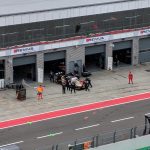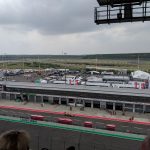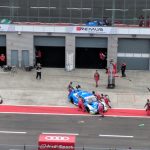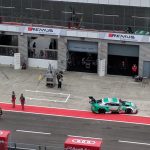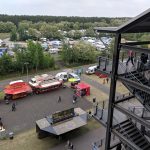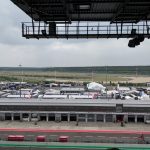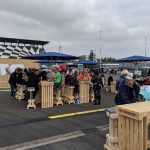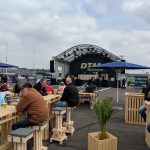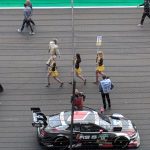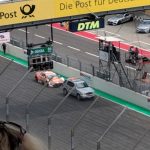Es war mal wieder ein super Wochenende. War auch nicht anders zu erwarten. Da die anderen Chaoten Urlaub genommen hatten und schon um 10:00 Uhr starten wollten, hatte Danilo Sorge, dass wir nicht rechtzeitig ankommen, um unsere Hazienda in Beschlag zu nehmen. Deshalb hat er gedrängelt.
Ich hatte den Wagen für 7:30 bestellt und ihm gesagt, dass ich so gegen 9:00 Uhr bei ihm wäre, aber zum Glück ging es wesentlich schneller. Als ich um 7:25 ankam, war der Mietvertrag schon ausgedruckt. Ich musste nur noch unterschreiben, das Auto (einen Golf) besichtigen, und dann bin ich auch schon vom Hof gefahren.
Um 8:15 stand ich bei Danilo vor der Tür. Er war noch beim Frühstück und hat so früh nicht mit mir gerechnet. “Ich bin beeindruckt!”, waren seine ersten Worte. Um 8:30 sind wir losgefahren, und nur 5:30 später waren wir in Schwarzheide. Die Anderen waren natürlich noch nicht da, so dass wir unsere Hütte wieder beziehen konnten.
Wir haben Bier in Kühltaschen mitgenommen, so dass wir bei Ankunft gut versorgt waren. Wir wurden von Manfred begrüßt, weil seine Frau noch Einkaufen war, aber den konnten wir recht schnell abwimmeln. Kaum eine Stunde später waren die Chaoten auch da.
Leider wollten sie uns nicht in dem einzigen Restaurant, dass es in Schwarzheide gibt, aber das war kein Problem. Dann haben wir halt gegrillt. Hendrik hat das in die Hand genommen, und am Freitag erst das Brot gegrillt, und dann das Fleisch. Falsche Reihenfolge! Das musste er sich das ganze Wochenende anhören 🙂
Wir sind am Freitag um ca. 24:00 Uhr ins Bett gekommen. Ich hatte die nötige Bettschwere, und Danilo auch. Am Samstag gab es wie immer ein super Frühstück mit Wurst vom Fleischer. Wir sind alle früh aufgestanden, so dass wir schon um 9:30 am Ring waren. Rechtzeitig zum freien Training, und natürlich gab es auch sofort das erste Bier.
Hat nicht lange gedauert, bis wir den Pegel wieder hatten. Den haben wir den ganzen Tag gehalten. Wacken lässt grüßen! Da haben wir Pegelsaufen gelernt 🙂
Nachdem wir wieder zurück waren, haben wir gegrillt. Die Runde war zweigeteilt. Rico hat sich in den Garten gesetzt, um die Sonne zu genießen, Danilo, Toni, Pichi und ich haben auf der Veranda gesessen und uns über Politik unterhalten. Als Manfred sich zu uns gesellt hat, musste ich weg und bin zu den Anderen gegangen.
Ich habe es nicht mitbekommen, aber anscheinend haben sich Olli und Rico richtig gezofft. Am Sonntag erwähnte Rico, dass man nicht auf Olli angewiesen sei. Es stellte sich sowieso die Frage, ob es unser letzter Besuch am Lausitzring war, weil die DTM dort sehr wahrscheinlich 2019 nicht mehr fährt. Wir haben uns darauf geeinigt, dass wir alternativ zur ADAC GT Masters fahren, gegebenfalls auch ohne Olli, was aber schade wäre.
Wir werden sehen. Am Sonntag sind Danilo und ich nach dem Qualifying abgereist, ohne uns das Rennen anzuschauen. Um 12:05 sind wir losgefahren, um 16:15 waren wir in Bremerhaven. Eine sehr gute Zeit! Der Tank war zwar auf Reserve, so dass ich von Bremen bis Bremerhaven nur noch 150 anstatt 190 km/h fahren konnte, aber irgendwas ist ja immer 🙂
Gefahrene Kilometer: 1131 Getankt: 86.32l Kraftstoffkosten: 127.90€ (Super E10) Durchschnittsverbrauch: 7.63l Mietkosten: 57.72€ (abzüglich 1500 Punkte) Gesamt: 185.62€
So, und jetzt noch die obligatorischen Fotos:


